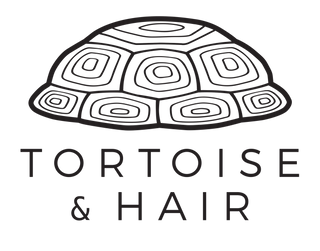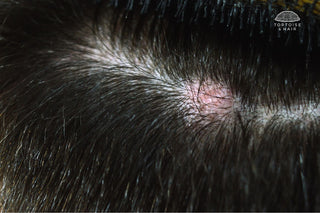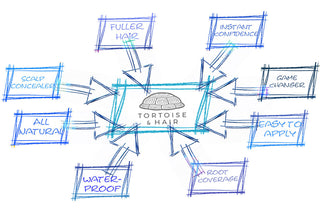Lichen Planopilaris (LPP) is a rare and chronic inflammatory condition that affects the scalp, causing permanent hair loss due to scarring. It is considered a variant of lichen planus, an autoimmune disorder where the body’s immune system mistakenly attacks the skin and hair follicles. The inflammation associated with LPP leads to the destruction of hair follicles, resulting in smooth, bald patches on the scalp.
LPP primarily affects adults, with a higher prevalence in women, especially those between the ages of 30 and 60. Although uncommon, LPP can significantly impact an individual’s confidence and quality of life due to its visible effects and associated discomfort.
What Are the Symptoms?
The hallmark symptoms of Lichen Planopilaris include patchy hair loss accompanied by scalp discomfort. In the early stages, affected areas may appear red or inflamed, with visible scaling around hair follicles. As the condition progresses, scarring replaces the damaged follicles, leaving smooth, bald patches that are irreversible.
Additional symptoms often include:
- Itching or burning sensations: Many individuals with LPP experience scalp irritation, which can range from mild to severe.
- Tenderness or pain: Inflammation around the hair follicles can cause discomfort, especially during flare-ups.
- Scaling or flaking: White scales may form around the base of hair shafts before the follicles are destroyed.
Hair loss caused by LPP typically starts in small, localized areas but can spread if left untreated. Unlike non-scarring forms of alopecia, the damage caused by LPP is permanent, making early detection and intervention critical.
Can It Be Treated Medically?
While there is no definitive cure for Lichen Planopilaris, medical treatments can help manage symptoms, reduce inflammation, and slow the progression of hair loss. Treatment often involves a combination of therapies tailored to the individual’s specific needs.
- Topical Corticosteroids: These are commonly prescribed to reduce inflammation and alleviate itching or burning sensations. They are applied directly to the affected areas.
- Oral Medications: Drugs such as hydroxychloroquine, a systemic immunosuppressant, or doxycycline, an anti-inflammatory antibiotic, may be used to control the immune response and reduce scalp inflammation.
- Intralesional Steroid Injections: These injections deliver corticosteroids directly to the scalp, targeting inflamed areas to slow follicle destruction.
- Anti-Androgens: Medications like finasteride or dutasteride may be prescribed to reduce hormonal triggers that exacerbate LPP in some individuals.
Consistency with treatment and regular follow-ups with a dermatologist are essential for managing this condition effectively. While regrowth in scarred areas is not possible, preserving unaffected follicles is the primary goal of treatment.
What Are Options to Help My Thinning Hair Caused by Lichen Planopilaris?
Managing the cosmetic effects of Lichen Planopilaris involves finding solutions that restore confidence and accommodate the condition's progression.
Hair fibers, such as those from Tortoise & Hair, provide an excellent way to conceal thinning areas caused by early-stage LPP. These fibers adhere to existing hair strands, creating a fuller, thicker appearance and helping mask visible patches.
Wigs and hairpieces are a practical option for individuals with more advanced hair loss. Modern wigs are lightweight and natural-looking, allowing for creative styling while offering full coverage. Partial hairpieces, such as toppers, can address localized thinning areas and blend seamlessly with natural hair.
Styling changes can also help individuals manage thinning hair. Shorter hairstyles or layered cuts can make remaining hair appear fuller, while accessories like scarves or hats can provide stylish coverage for scarred areas.
For those who embrace the changes in their appearance, shaving the head can transform hair loss into a personal statement of confidence and self-acceptance. This option allows individuals to redefine their relationship with beauty and focus on their overall well-being.
Living with Confidence Despite Lichen Planopilaris
Lichen Planopilaris is a challenging condition, but it does not define you. By combining medical treatments with practical cosmetic solutions, you can regain control over your appearance and confidence. At Tortoise & Hair, we provide tools to help you feel your best, offering products and resources designed to support you at every stage of your journey. Whether you choose to conceal thinning areas, embrace a bold new look, or focus on treatment, you are not alone in navigating this experience.



